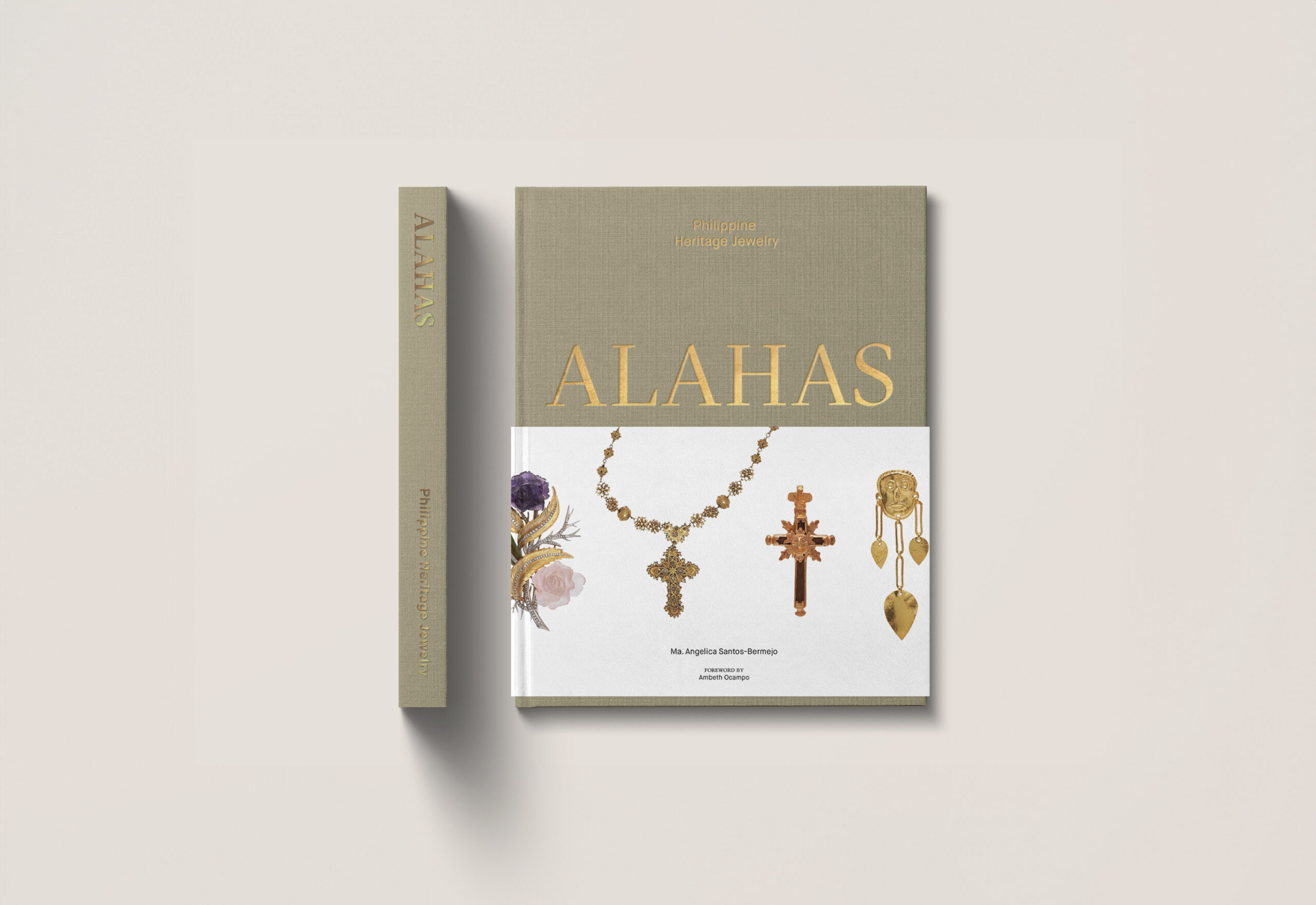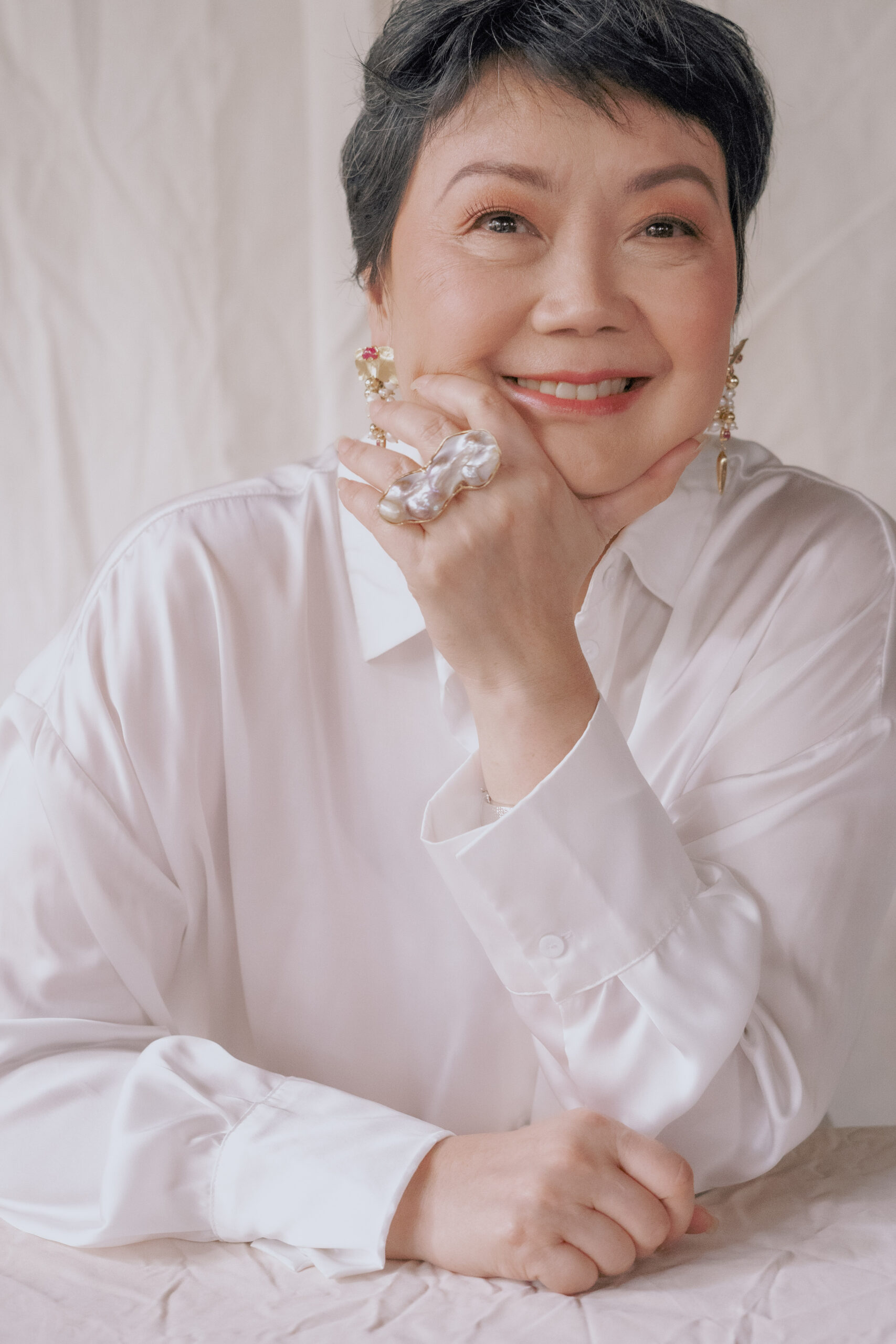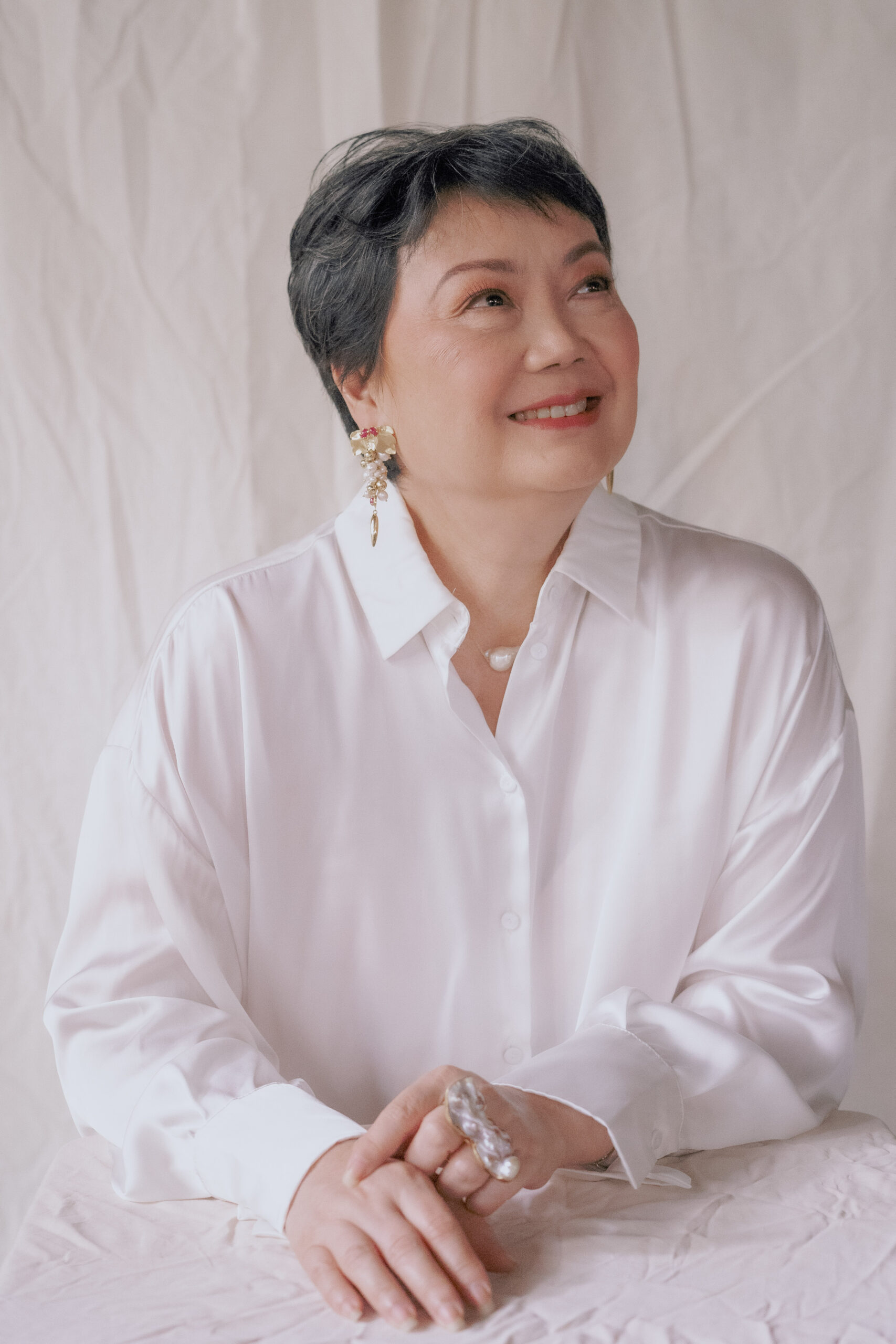Jewelry collector and designer Maria Angelica Santos-Bermejo documents centuries of Philippine history in her seminal book
The book isn’t your run-of-the-mill history textbook. Yes, it tells a story of history, but it does so through glittering jewelry.
All the while, the jewels link back to author Maria Angelica Santos-Bermejo and her personal connection to each piece she has either collected or created.
Written after meticulous research over several years, historian Ambeth Ocampo describes the book in the foreword as both “a visual feast and handy reference.”
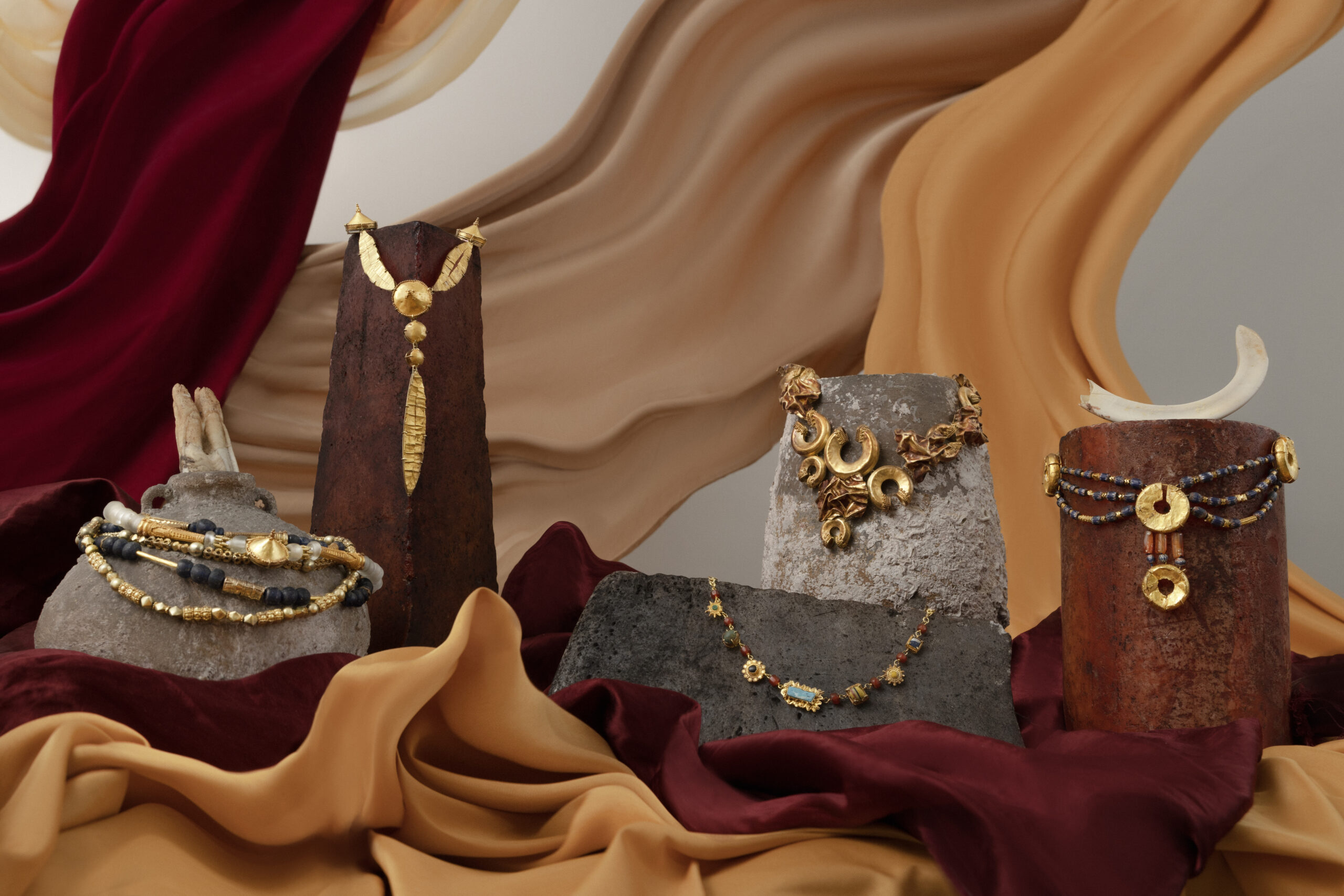
The book is filled with eye-catching designs and stunning photography that makes you pause to marvel at each jewel’s intricacy. Designed by Tomás de Cárcer and Kara Bermejo, collaborators from the New York and Chile-based Manifesto Design Lab, the level of design boasts quality just starting to appear in the country, setting a standard for future books.
The latter of the design duo also happens to be Tita Gigi’s daughter, a close link that adds a more meaningful touch to the thorough creative direction.
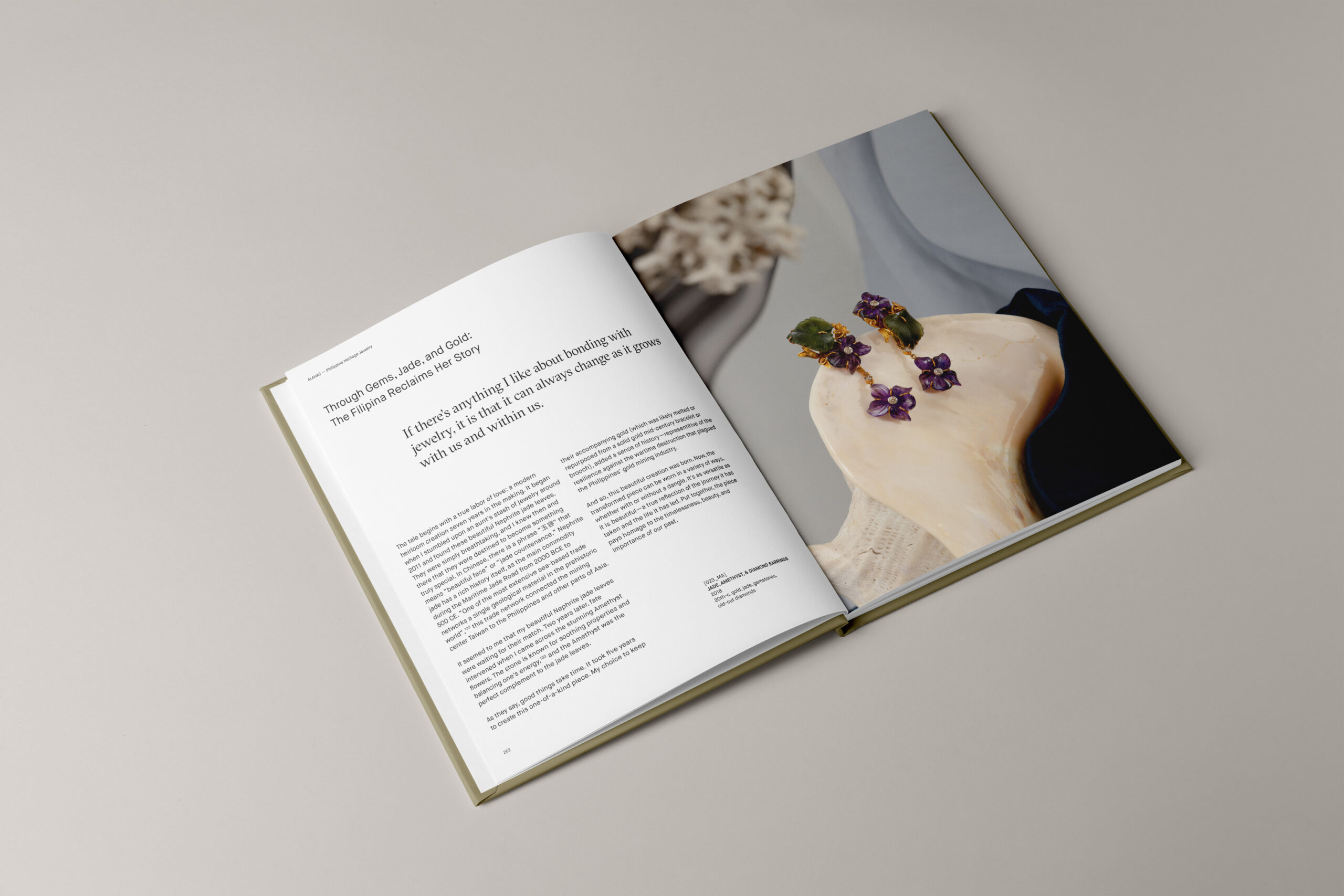
Ultimately, author Maria Angelica Santos-Bermejo aims to achieve a book that does not just pay homage to bygone times, but inspires a sense of nationalism to keep the tradition of Philippine Heritage jewelry alive.
She opens the book with a dedication, “For my children, my children’s children, and the future generations they represent.”
Get to know the author
Maria Angelica Santos-Bermejo, fondly called “Tita Gigi,” is a Filipina jewelry preservationist and self-taught designer. With over 38 years of experience, Bermejo has been a long-time collector of antiques. Ocampo describes his relationship with Gigi and her husband Jun, portraying them as “a formidable team of collectors” from religious santos statues to colonial furniture and ceramics.
Although the author’s story collecting began with what she writes in her book as a “life-altering expedition” to Mrs. Lourdes Dellota’s shop in Jaro, Ilo-ilo. Her treasured mentor first introduced her to ancient beads, which began her fascination with jewelry that has since snowballed into a massive collection.
Bermejo specializes in re-creating Filipiniana heritage jewelry with a contemporary twist, later seen in the Mata Mata Collection and also sold in her shop Ma. Angelica Rare Finds.
Her work has been featured in the Department of Trade and Industry’s luxury concept shop “Marahuyo” and at the Ayala Museum store. She was a featured designer at the Dubai World Expo in 2020. Gaining recognition globally, her salvaged porcelain pieces were published in Arts of Asia magazine, a global journal for research.
Travel through time in the pages
For her latest major project, the Alahas book goes through six chapters that categorize and capture the jewelry in each era—
It begins with the Indigenous Period before 1571, highlighting gold in all manners, from barter rings to earrings with divine symmetry, showing the wealth of gold in pre-colonial times.
This is followed by the Northern Luzon Collection, raising awareness on jewels in the Cordillera—pang-ao glass, Ming, Chevron, Carnelian, Agate, and all manners of beads, as well as some other unique pieces indigenous to the Northern Philippines.
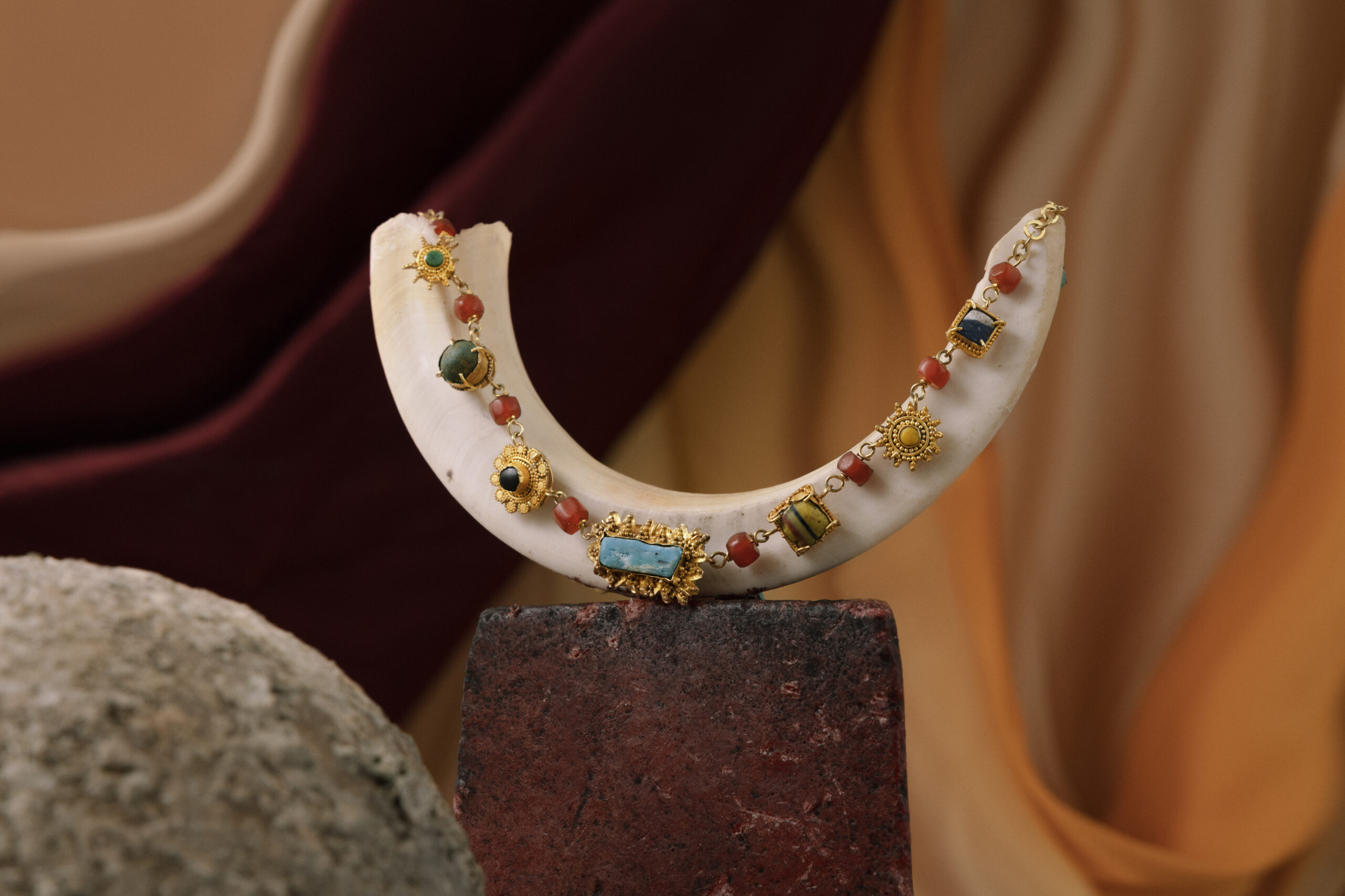
Next is the Spanish Colonial Period from 1565 to 1898, which acknowledges the splendor of the occupied Philippines. More than maximalist symbols of material abundance, but symbols of religious beliefs, think the quintessential tamborin—but in rare designs you’ve never seen. Look for crosses, enamel-painted pendants, and payneta combs. There are also unique criolla earrings, some of which take after designs of a steamship, and another that even holds human hair as a symbol of remembrance and grief.
Moving into the Turn of the Century and American occupation, the theme revolves around women who were given an education and began to take jobs as secretaries or typists. Here, Bermejo writes about La Sampaguita, her Lola Neng’s jewelry shop on Misercordia St. Expect grand, bedazzling diamond collars made of gold and old-cut diamonds. No simple tennis bracelets here.
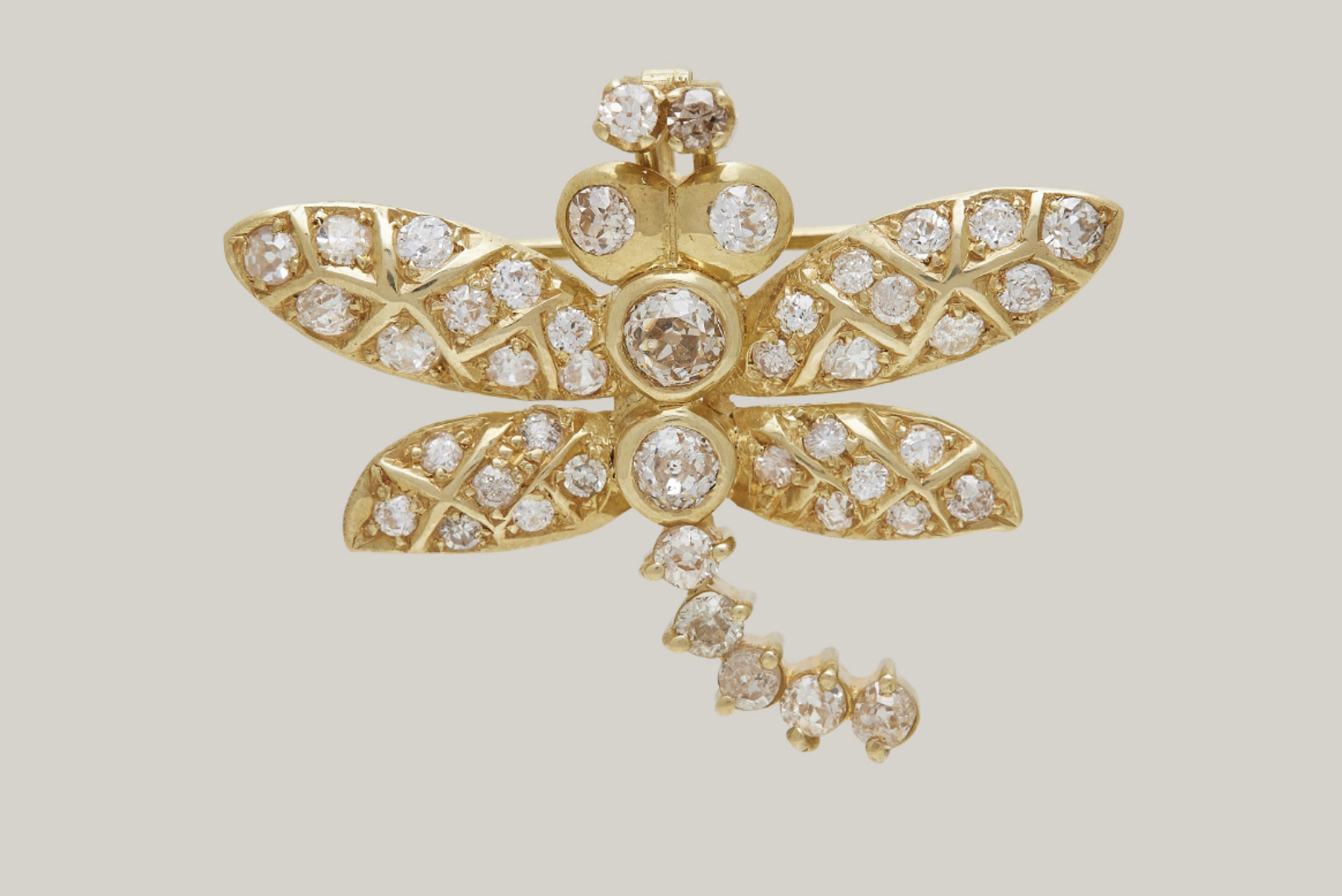
We move closer to the present in the Mid 20th-Century, after World War II. Highlighted here are modern-day heroines and women who head the household. After the war, jewels were hard to come by. Color was a creative way to add beauty. We see precious and semi-precious gems in pretty colors like jade and amethyst.
Lastly, the Mata Mata Collection brings us to today. “Maria” is a name that represents the modern Filipina who plays a crucial role in our economy’s growth while contributing to various industries. We see Bermejo’s creative jewelry design that encapsulates symbolic values, personal significance, and versatility.
In the Mata-Mata collection, each piece relays the designer’s inspirations, from pre-colonial times to the mid-century.
A rare book format
Apart from the history and in-depth research, all the narratives are easily digestible.

Each chapter begins with a “situationer” which paints a picture through words. These situationers act like a story. For example, a situationer builds a world of Babaylans in a ritual, or an independent suffragette and beauty queen walking through Ermita in the 1920s. Towards the end, we see the contemporary woman making strides in her career in healthcare, journalism, and the non-profit sector. These are the “Marias” that Bermejo speaks about—all of whom don and shine in the heritage jewels of their time.
Both in the introduction and the epilogue, the author writes a pensive train-of-thought essay. Besides concrete historical background that grounds the chapter with dates and places, she consistently calls to honor the country’s diverse heritage and national identity.
The book is also complete with an in-depth catalog in the appendix as well as a glossary of Philippine jewelry terms for those beginning their passion in Philippine heritage jewelry.
The Alahas book launch
Aligned with the spirit of creativity in Art Week and along Art Fair Philippines, the book launched on February 17, 2024, at Comuna Makati.
READ MORE: Art Fair Philippines Shines a Spotlight on Photography
The event was filled with guests, from young jewelry collectors to those visiting from abroad simply fascinated by Philippine history. There was a casual panel discussion moderated by designer, JJ Acuña. The exhibition runs until March 16, 2024, in the same studio.
Throughout pages that pay tribute to each era in our written history, the women who wore the jewelry, and the artisans and who created it, “Alahas”: A Book on Philippine Heritage Jewelry presents a labor of love. While the book reconnects with the author’s self-identity, it extends a love for her motherland that is felt in its readers, as history comes to life in the details of a jewel and the pages of a book.
The author writes,
“Jewelry endures the test of time. And so does the essence of our identity. It is a fitting inheritance for our future generation.”
Discover Alahas here or find Philippine heritage jewels at Ma. Angelica Rare Finds.
The book will be on exhibition at Comuna until March 16, 2024, with a special launch at 6 PM, February 28, 2024, at the Ayala Museum, Makati City.

